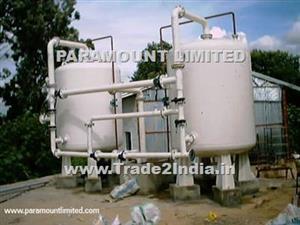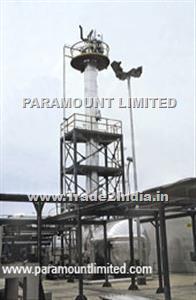
Ultra Pure Water Treatment
Ultrapure water is used in Pharmaceutical industry, Semiconductor industry, Power industry, Solar power generation, electronics, medical, research and dialysis applications to name a few.
Ultrapure water systems are used to reduce or eliminate dissolved and suspended solids, biological organisms, dissolved gasses and organic carbon. This is critical in complying with required standards for different commercial and industrial applications.
Ultrapure water treatment uses appropriate processes for removing organic compounds in water, dissolved and suspended solids, organic carbon, dissolved gasses and biological organisms (e.g., bacteria, viruses, pyrogens).
Paramount Limited designs and integrates the various process steps depending on the ultra pure water requirements for the specific applications.
Paramount integrates the following processes depending on the raw water quality and the ultrapure water quality requirement based on the specific industry utility:
• Multigrade filtration for removal of suspended solids
• Membrane based filtration units (ultrafiltration/ microfiltration/ nanofiltration) for reduction of suspended solids, colloidal particles, and control of virus and bacteria
• Softeners for reduction of hardness
• Suitable chemical dosing arrangements to achieve disinfection of water, reduction of residual Chlorine, reduction of sparingly soluble salts etc
• Ultraviolet system for reduction of TOC
• Ultraviolet disinfection system
• Reverse Osmosis treatment
• Degassifiers
• Electro de-ionization as polishing system
• Mixed bed resin treatment
The salient features of Paramount integrated Ultrapure water treatment systems ensures,
• Reliability
• Clean operation
• Minimum possible effluent generation
• Minimization of chemical handling and use
• Excellent capacity of microbial reduction
• Continuous operation
• Ease of validation
• Compliance with FDA requirement
Paramount provides optimal and safe Ultra pure water storage and distribution system.
The prime necessity of Ultra pure storage & distribution system is to distribute the water to all user points in the plant without deterioration in the quality of Ultra pure water received from Generation system.
Following factors are considered in our design of Storage & Distribution system:
• Capacity of Ultra pure water generation system
• Peak load of the user points
• Return line minimum velocity required
• Elevation of the system and user points
• Pressure requirement at user points
• To maintain 1 Kg/Cm2 pressure in return line
• No. of User points
• Line size
The salient features of the Paramount design and supplied Ultrapure water Storage and distribution system are:
• High quality Tubes used for piping
• Carefully designed and sized Pumps for reliable and trouble free operation
• Storage tank is facilitated with Hot water sanitization jacketing
• Hydrophobic Vent Filter cartridge with heat traced vent filter housing
• Conductivity Transmitter is provided with dump valve
• No, or minimum possible dead legs
• Use of Zero Dead leg valves in place of Y loop with simple diaphragm valve
• Fully automated system PLC Panel with multi colour MMI for smooth operation and accurate record and with minimal or no human interference
• Multiple levels pass word (up to three levels) protection in all system settings provide a tamper proof setting
• All connections are Triclover end to avoid threaded connections




























 34059.jpg)

